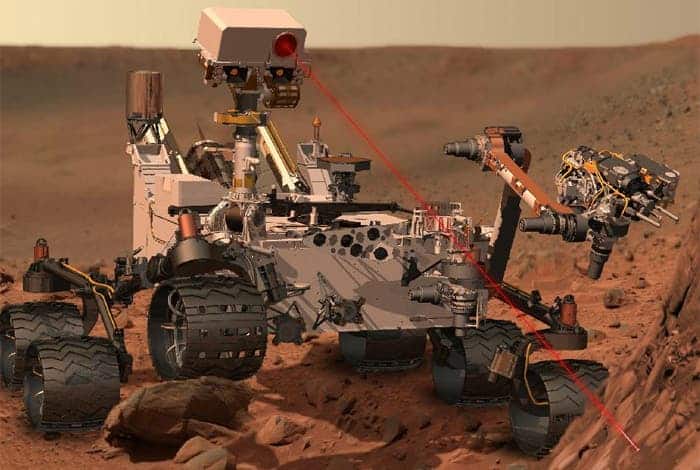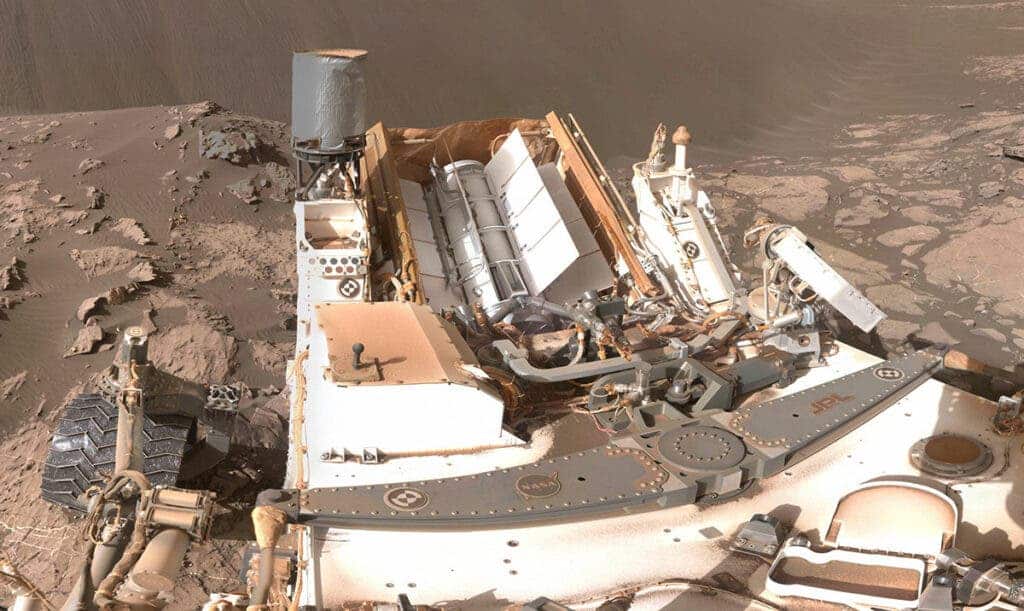“My battery is low and it’s getting dark” — this poetic translation of the Mars Opportunity rover’s final transmission describes the rover’s struggle to recharge itself after its solar panels were covered by dust during a windstorm.
Though Opportunity outlived its projected lifetime by over 14 years, advances in battery technology could have kept the rover running even longer. Out of all the parts that could have failed, the battery’s struggle to store and conserve energy proved to be Opportunity’s downfall.
It’s not just Opportunity — believe it or not, batteries are actually a major stumbling block for our exploration of space.

Rovers need power to operate. Without power, they can’t move around, use their equipment, or communicate with Earth. While rovers can feature things like solar panels, they also use batteries to store energy for times when other energy sources, like the sun, are unavailable.
Due to the harsh conditions on other worlds (and in the void between them), batteries are subject to far more requirements in space than they are on Earth. They need to last a long time (often years or decades) and be able to withstand thousands of charging cycles. They have to be tightly sealed and able to withstand the pressures of launch and the vacuum of space. The batteries can’t emit any substances that might be harmful to the spacecraft or its inhabitants, and all of their components should be nonflammable to avoid serious safety risks. In space exploration, you have to be prepared for the worst.
Despite all these challenges, batteries have been used on spacecraft since the first space flights in the 1960s. The earliest spacecraft used single-use batteries, which limited missions to a few days. Later missions employed nickel-cadmium batteries that were recharged with solar energy to increase mission duration to weeks or months.
More recently, NASA has turned to lighter, more powerful, and longer-lasting lithium-ion (Li-ion) batteries, which are ubiquitous in electric vehicles and personal devices on Earth. The Mars Perseverance rover, which launched in 2020, carries two Li-ion batteries to power itself during high-intensity studies, and between 2016 and 2021, the International Space Station upgraded all batteries on the station to Li-ion.
But for all they’ve done to revolutionize electric transport on Earth, Li-ion batteries aren’t without their drawbacks, especially in space. Li-ion batteries strong enough to power an entire spacecraft are heavy — too heavy for terrestrial applications like long-range transport or electric airplanes, and difficult to launch into space — and they contain rare and expensive elements like cobalt and nickel. Li-ion batteries also use flammable liquid electrolyte solutions to carry charge; if the battery is damaged, defective, or mishandled, a fire aboard a spacecraft would be catastrophic, according to Christopher Ianello, an electrical power expert in NASA’s Technical Fellows Office. The electrolyte solutions are also prone to freezing or boiling away in the extreme conditions of space and of other worlds.
New battery technologies beyond Li-ion may be better suited for aerospace applications. Researchers are studying new types of batteries that are cheaper and have longer lifespans than Li-ion batteries. Those new technologies are already in high demand here on Earth for applications like electric vehicles and grid-scale energy storage. Many of those new kinds of batteries can be modified to fit the requirements of space missions.

One prime candidate is the lithium-sulfur (Li-S) battery, one of the foremost technologies expected to eventually replace or support Li-ion batteries. Li-S batteries can store up to six times more energy than Li-ion batteries, and they weigh much less, leaving more room for instruments and mission equipment. They’re also far less expensive: sulfur is abundantly available as a byproduct of petroleum refinement, and Li-S batteries don’t contain any cobalt or nickel to drive up prices.
While Li-S batteries offer quite a few advantages over their Li-ion counterparts, there are still some issues that need to be addressed before they’re ready to go to space. Li-S batteries use flammable electrolyte solutions similar to those in Li-ion batteries, which are still prone to freezing or boiling in harsh conditions. Lithium metal electrodes also grow tiny spikes called dendrites while charging and discharging, which limit the battery’s life and can potentially pose safety hazards, including fire or explosion.
Researchers are actively studying ways to overcome these challenges. Some teams are focusing on the electrolyte solution: by increasing the concentration of salts in the solution, researchers can widen the temperature range over which the electrolyte remains in liquid form.
Other researchers are turning to solid electrolytes to replace their liquid counterparts. While it can be harder to move charge through a solid electrolyte, the lower flammability and greater temperature range of solid electrolytes make them an attractive option for crewed missions. As Rocco Viggiano, a lead solid-state battery researcher at NASA’s Glenn Research Center, said in an interview, batteries with solid electrolytes can “take a beating and still operate, often in less than ideal conditions.” On the electrode side, adding coatings to the lithium surface, or even replacing lithium with other metals like magnesium, can resolve some of the issues with dendrite growth.
It seems surprising that one of the limitations in our exploration of space could be something as commonplace as batteries. But even here on Earth, batteries are a serious bottleneck — they’re one of the main technological obstacles keeping us from transitioning to renewables quicker, and progress is often frustratingly slow.
Many new battery technologies are currently being researched, and although none are quite ready to power NASA’s next spacecraft, future missions to other worlds could feature a new generation of batteries. Inexpensive, resilient, and lightweight, these batteries will enable a whole new way of exploring other planets and satellites. As batteries improve, so too will our ability to explore worlds beyond our own.









